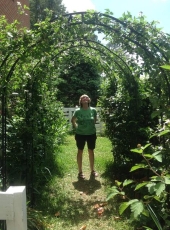


Clean With Cleaners You Can Eat by Raven Ranson
will be released to subscribers in:
soon!



 7
7




This is all just my opinion based on a flawed memory

 4
4




Inmate, Natures Asylum, Siskiyou Ward
"Live Simply, So Others may SIMPLY LIVE"

 4
4




- Tim's Homestead Journal - Purchase a copy of Building a Better World in Your Backyard - Purchase 6 Decks of Permaculture Cards -
- Purchase 12x Decks of Permaculture Cards - Purchase a copy of the SKIP Book - Purchase 12x copies of Building a Better World in your Backyard
 2
2




This is all just my opinion based on a flawed memory

 4
4




 3
3




Zone 8b 16”rainfall
 2
2




Inmate, Natures Asylum, Siskiyou Ward
"Live Simply, So Others may SIMPLY LIVE"
 2
2




This is all just my opinion based on a flawed memory





randal cranor wrote:
Right before COVID I had a heart attack and I am just getting some of that energy back but I am single,70, and a lot slower. There are others here, friends of mine, in worse case scenarios, so my heart goes out to you all. I have come to an understanding that I may lose it all,
https://app.watchduty.org/
<3 np oaks

|
Why is the word "abbreviation" so long? And this ad is so short?
The new permaculture playing cards kickstarter is now live!
https://www.kickstarter.com/projects/paulwheaton/garden-cards
|







